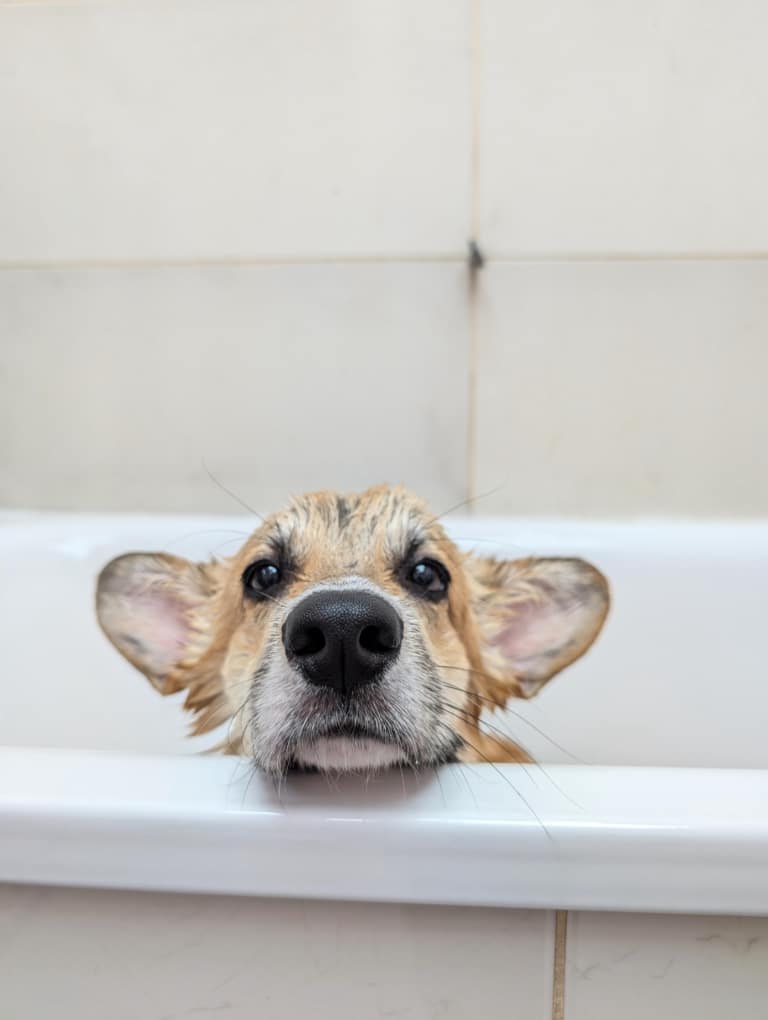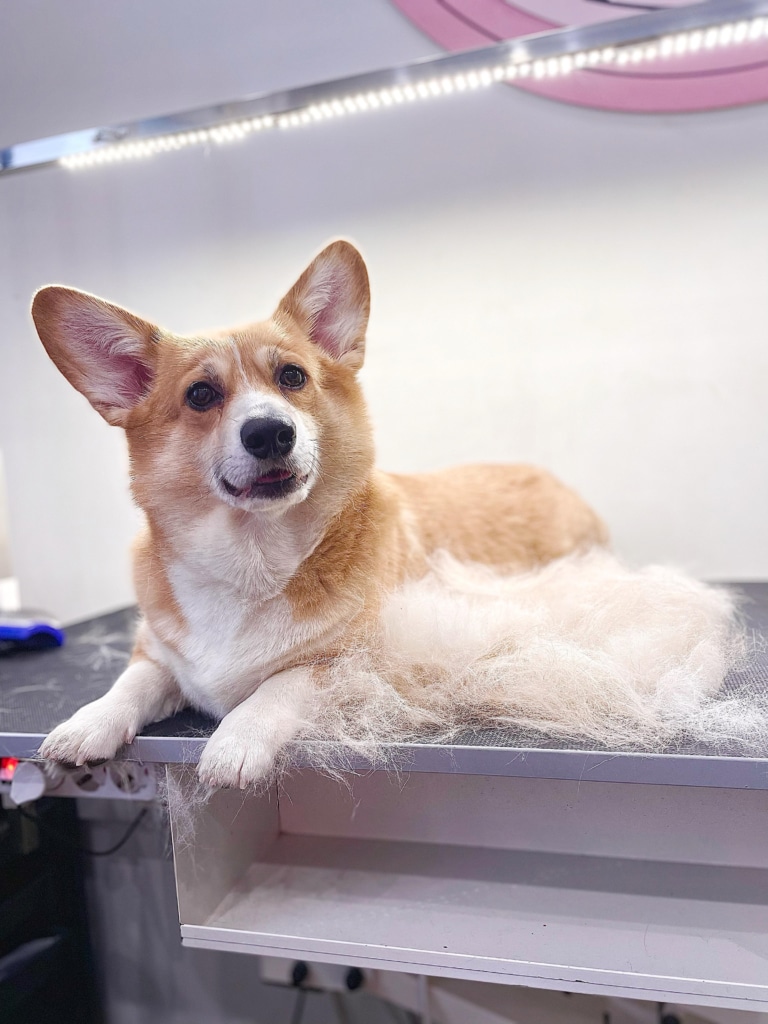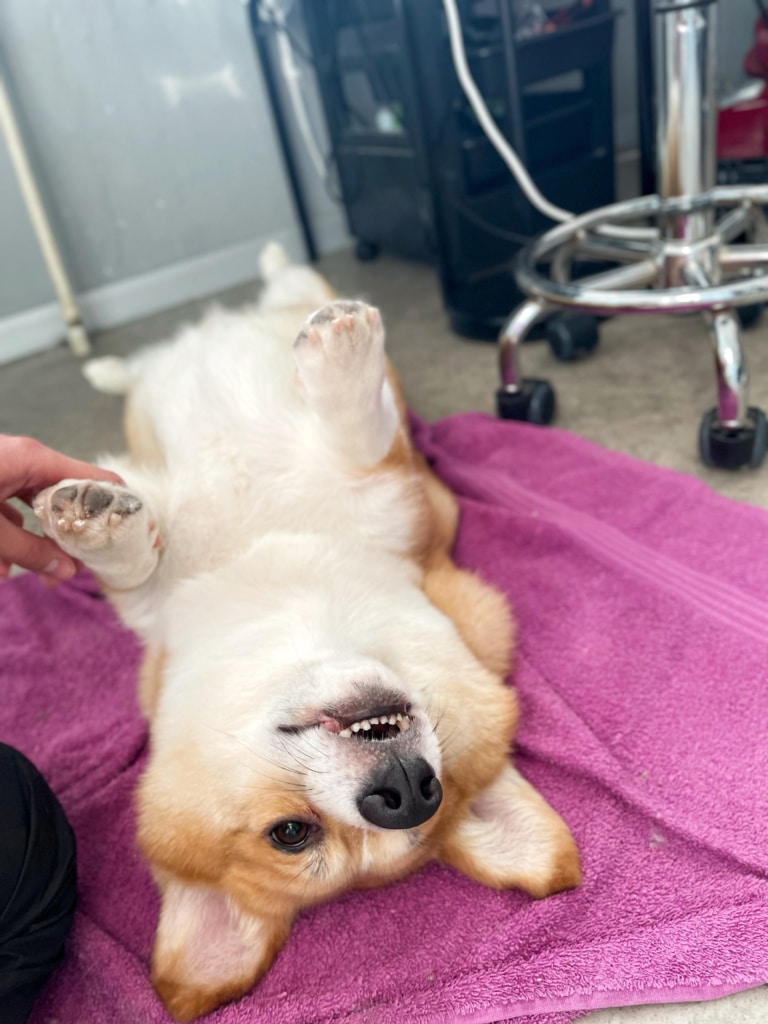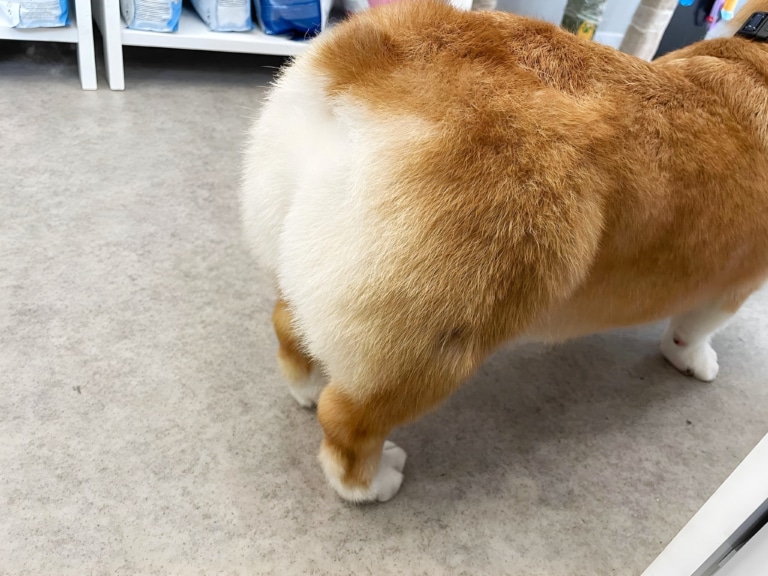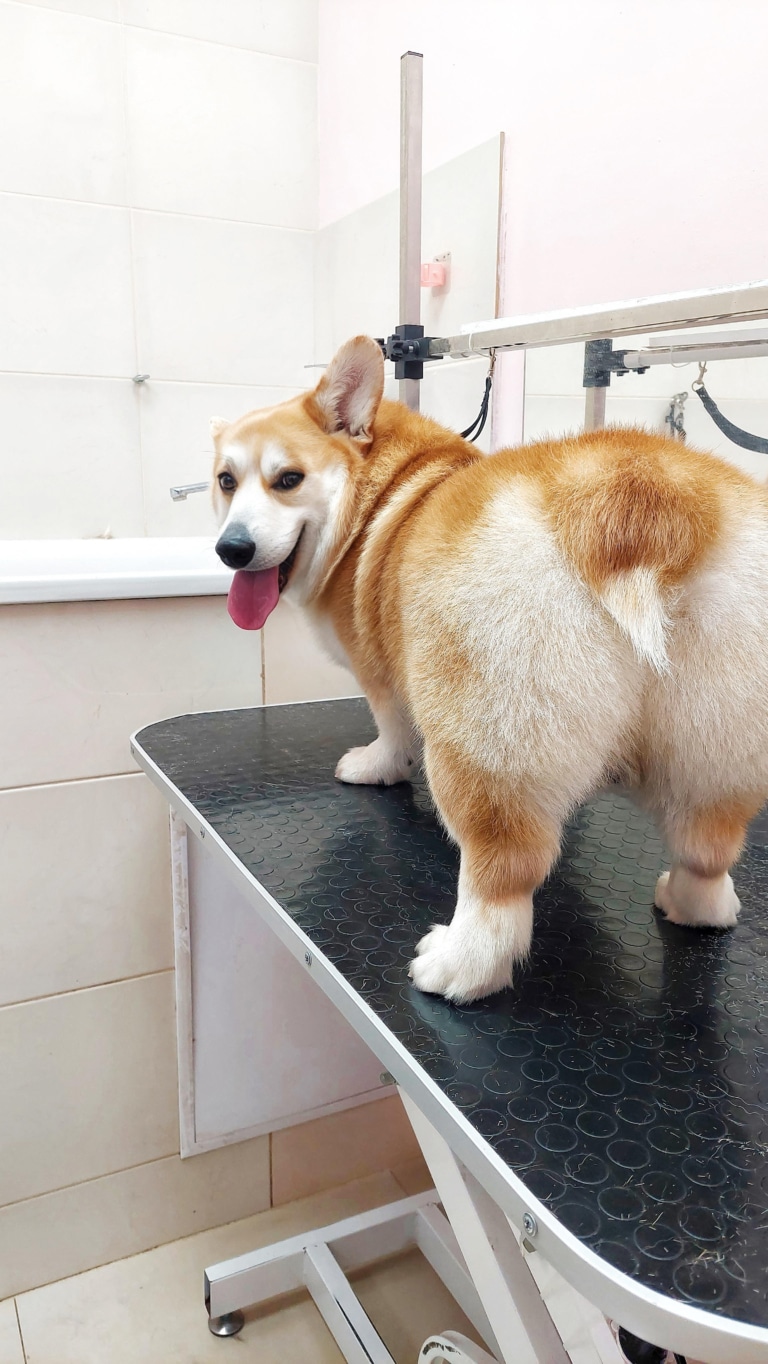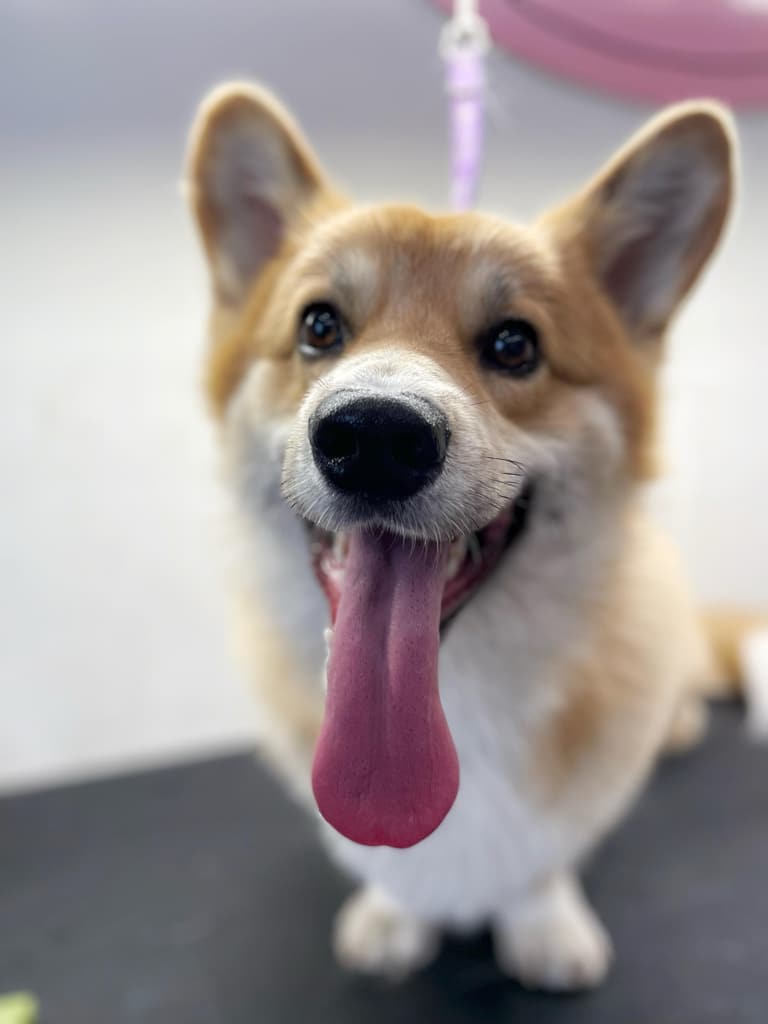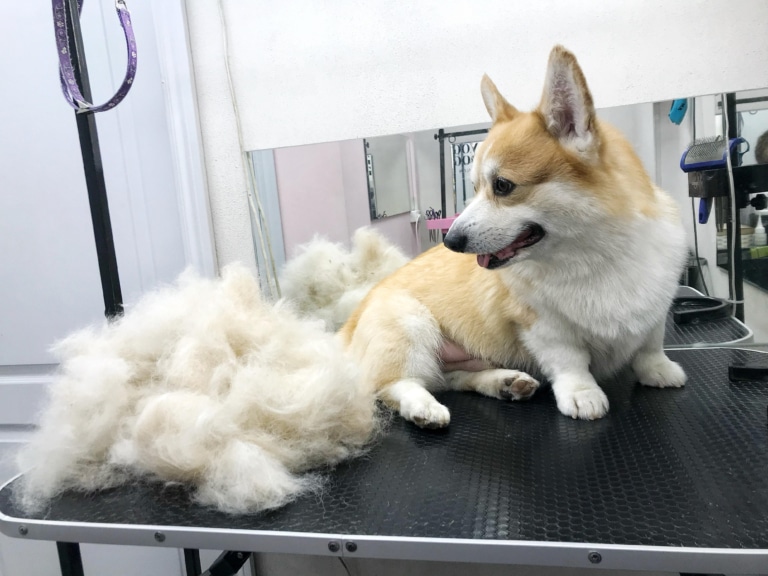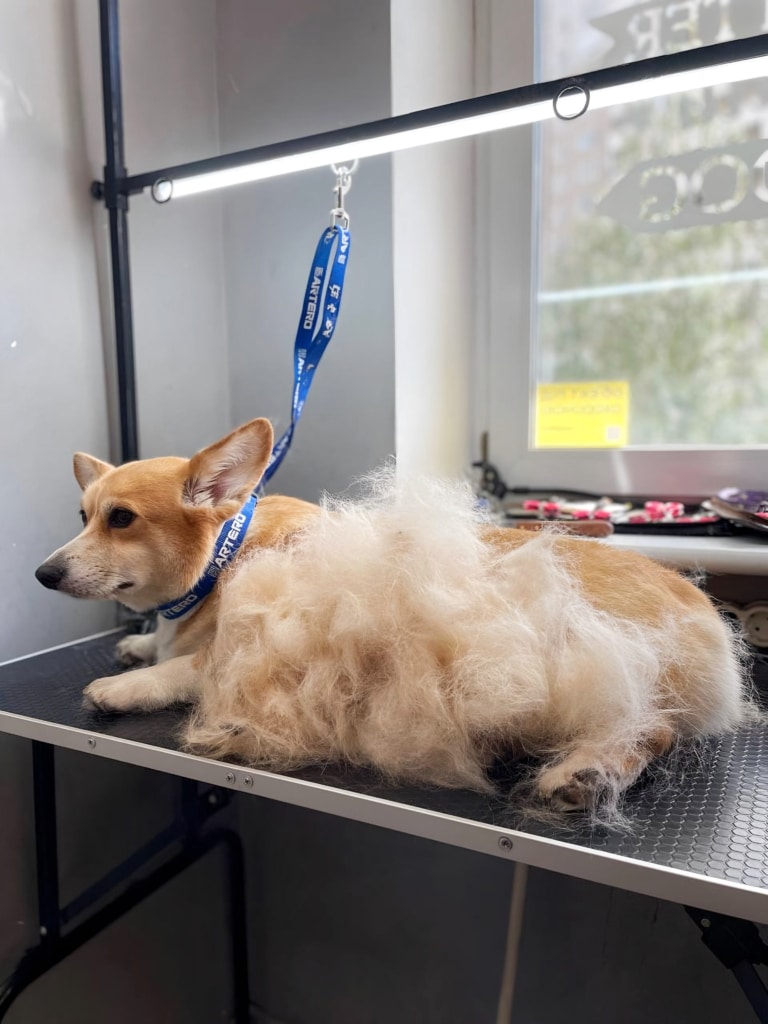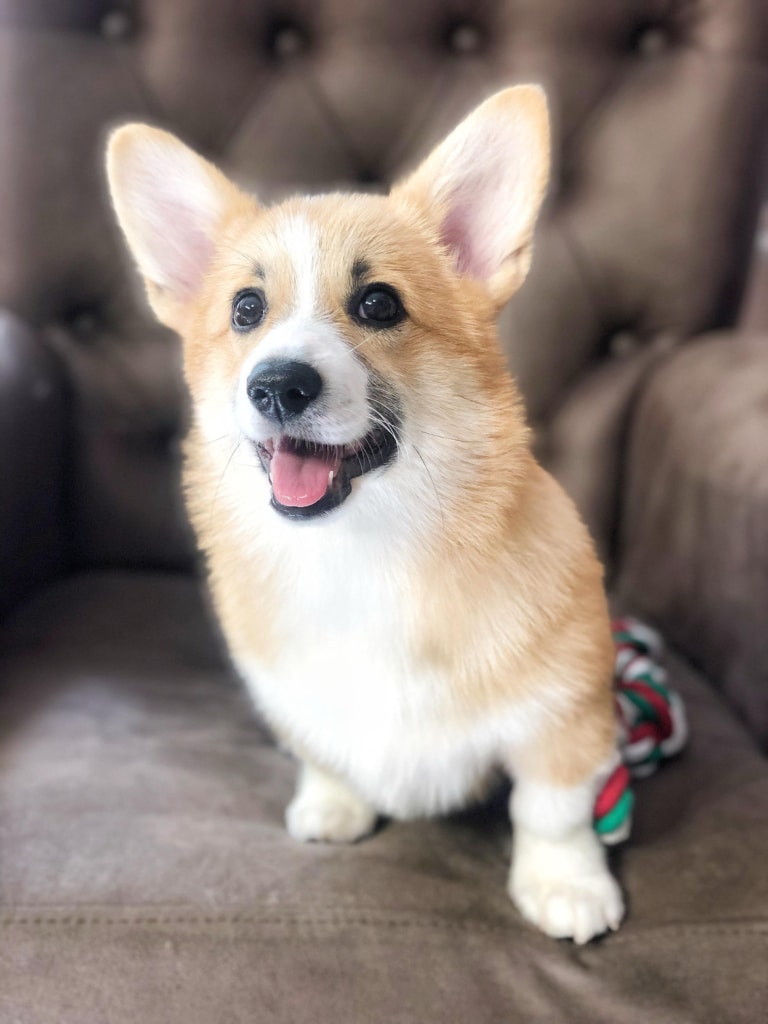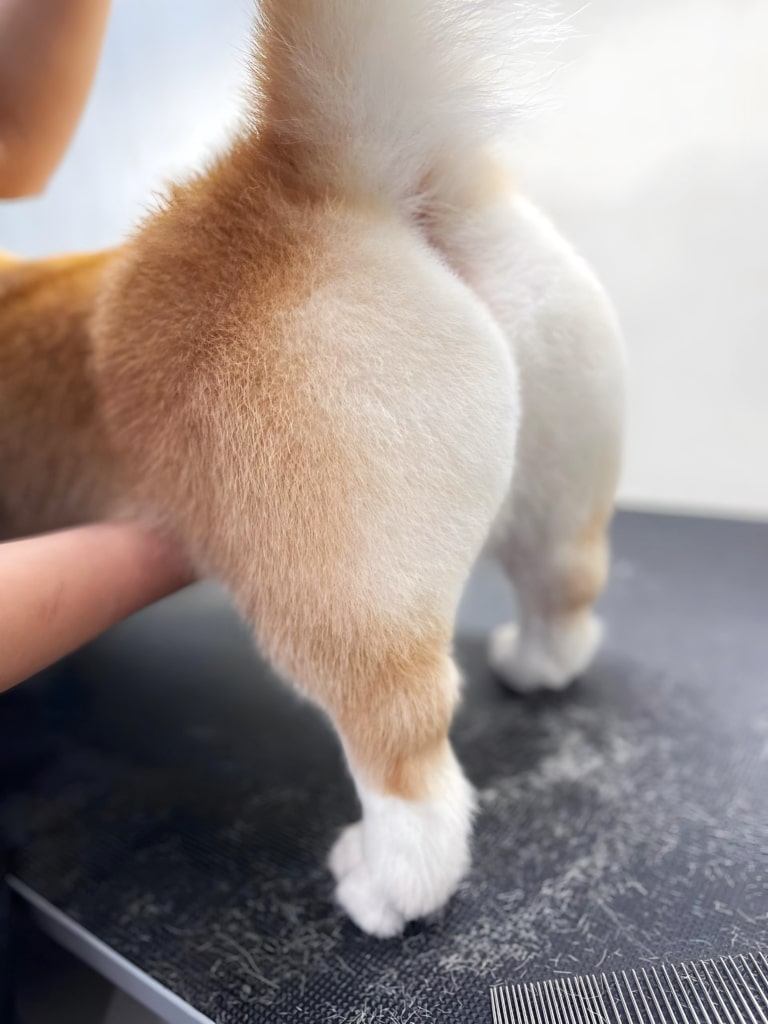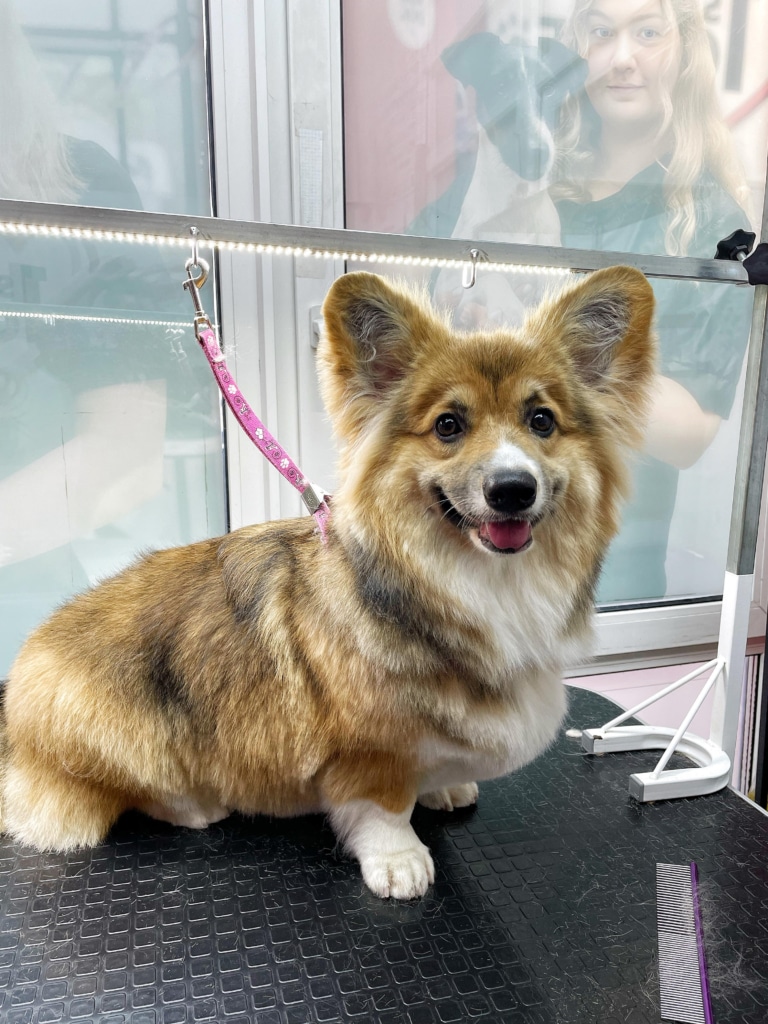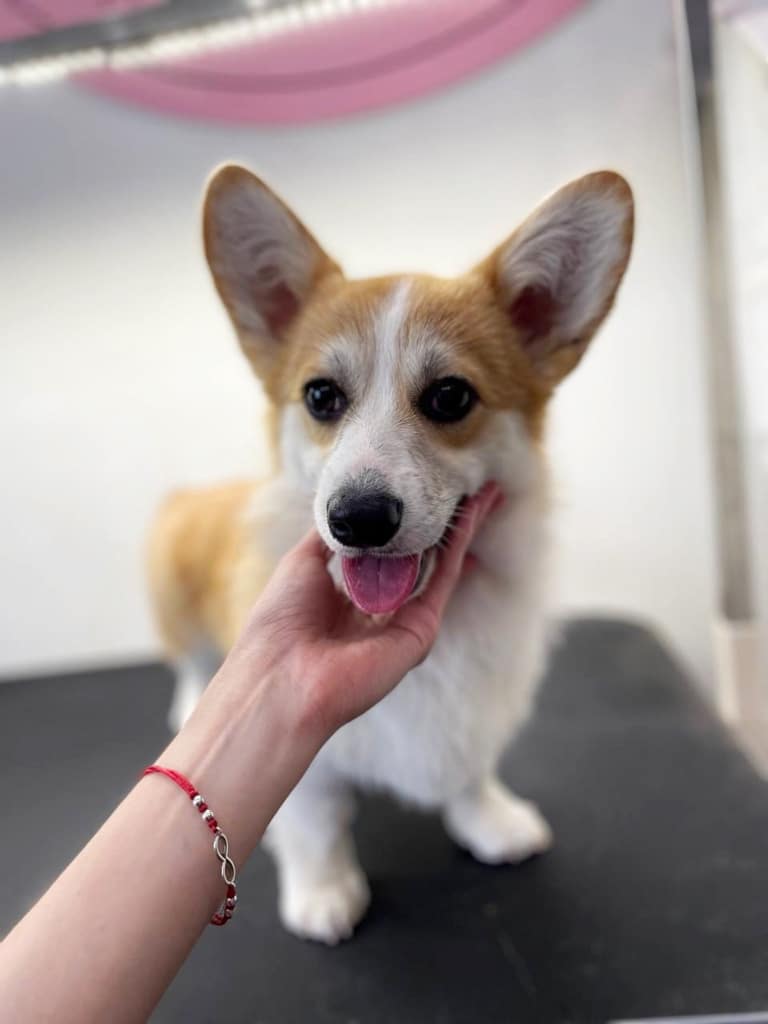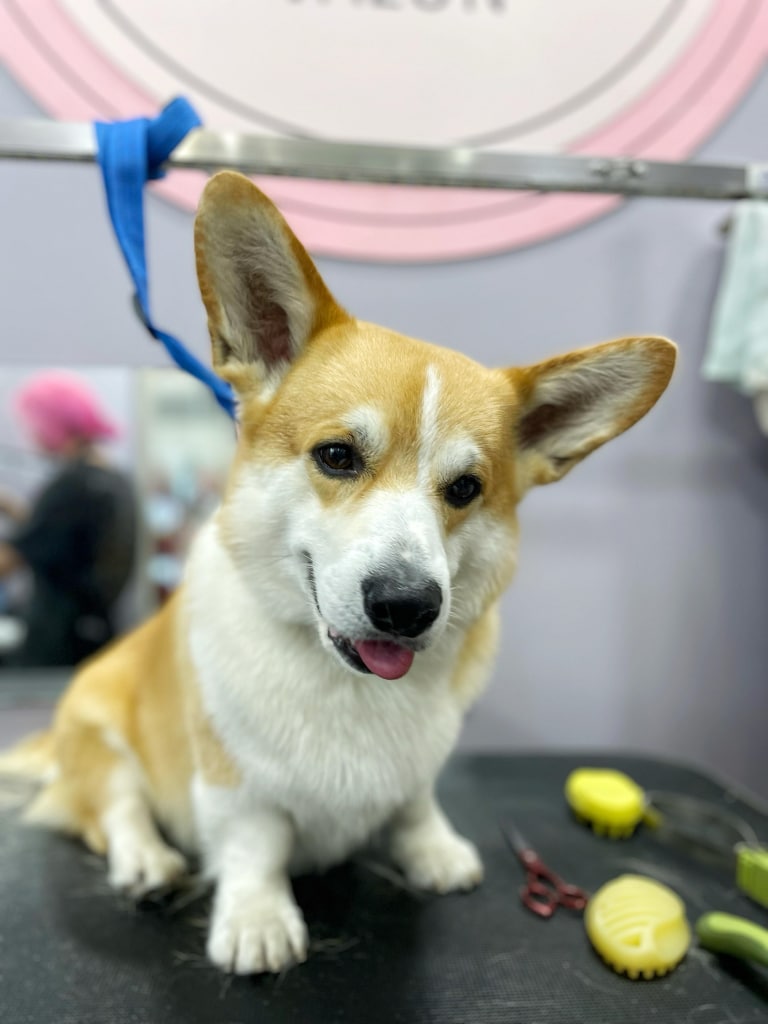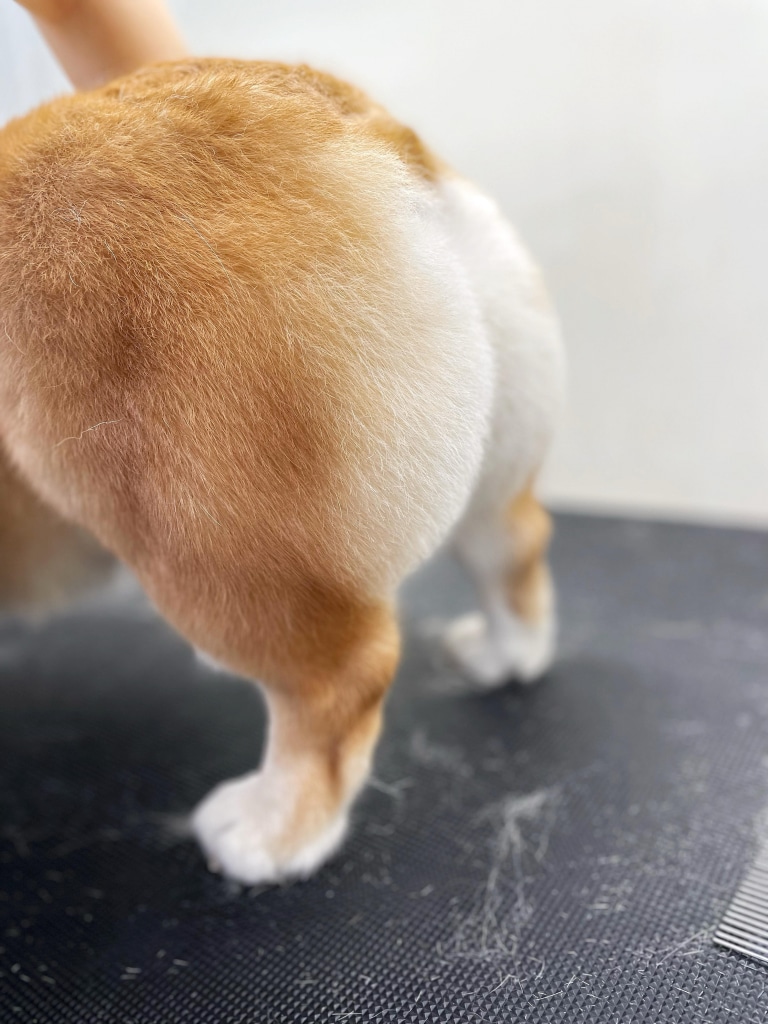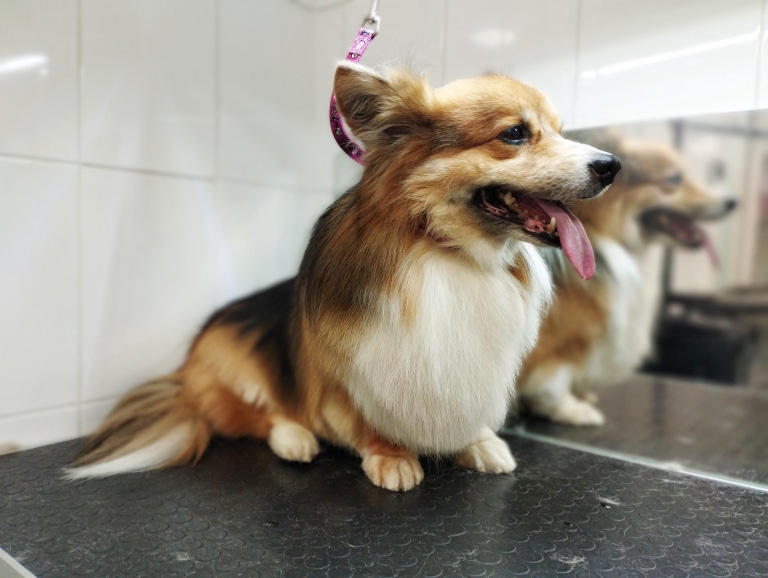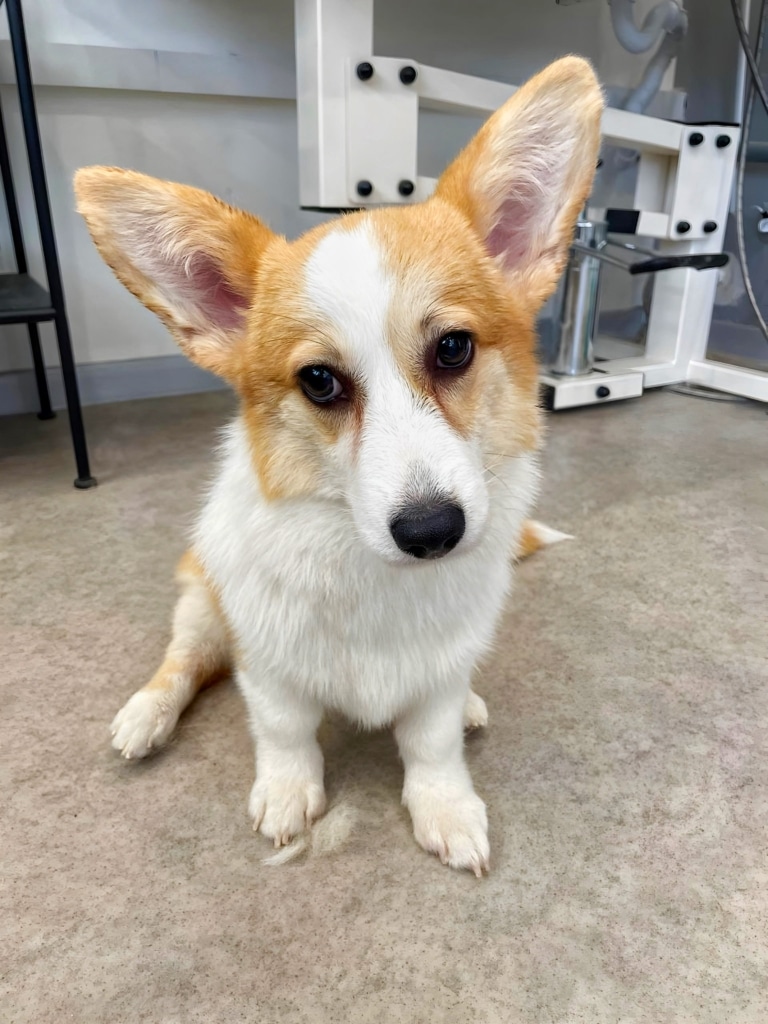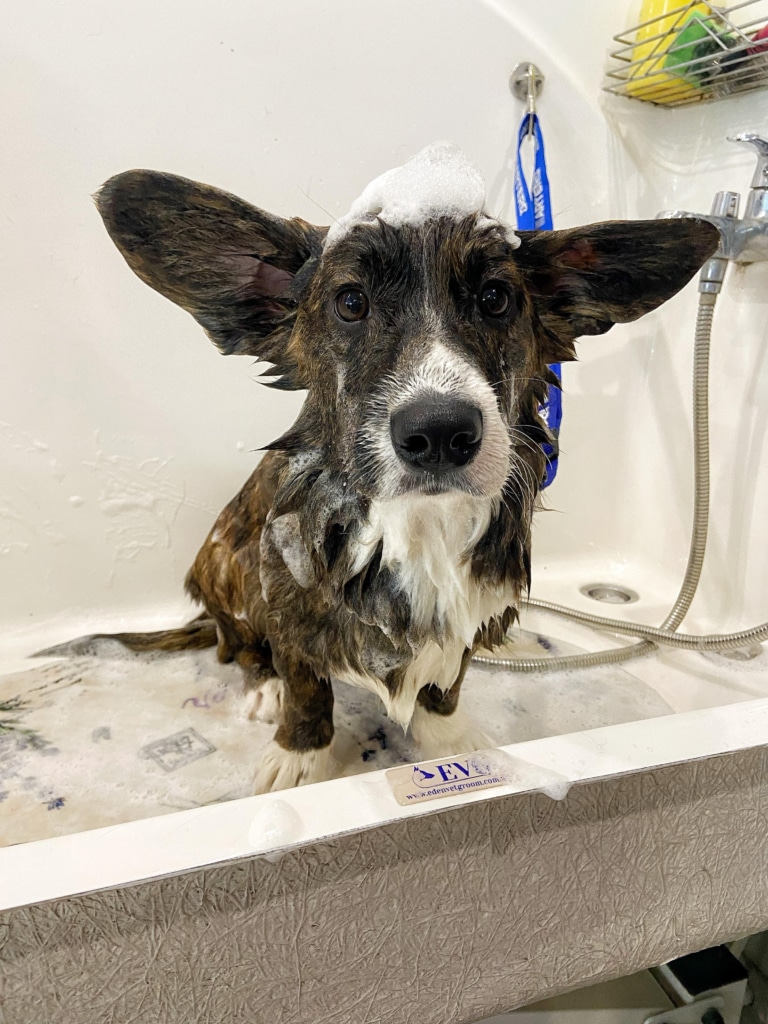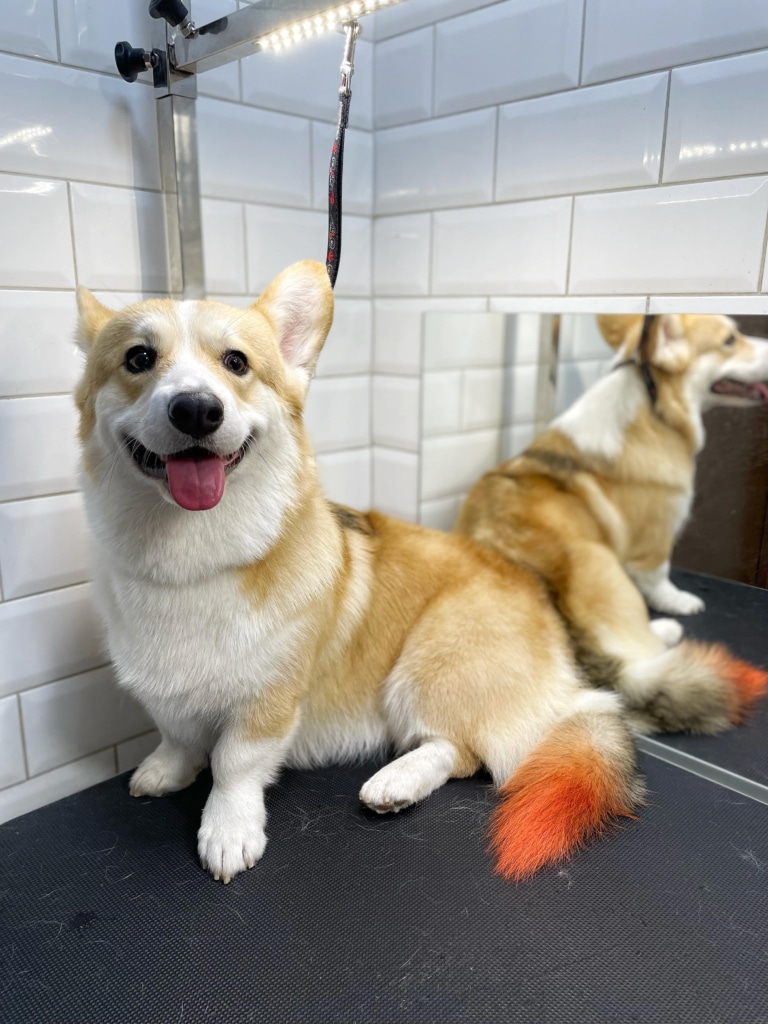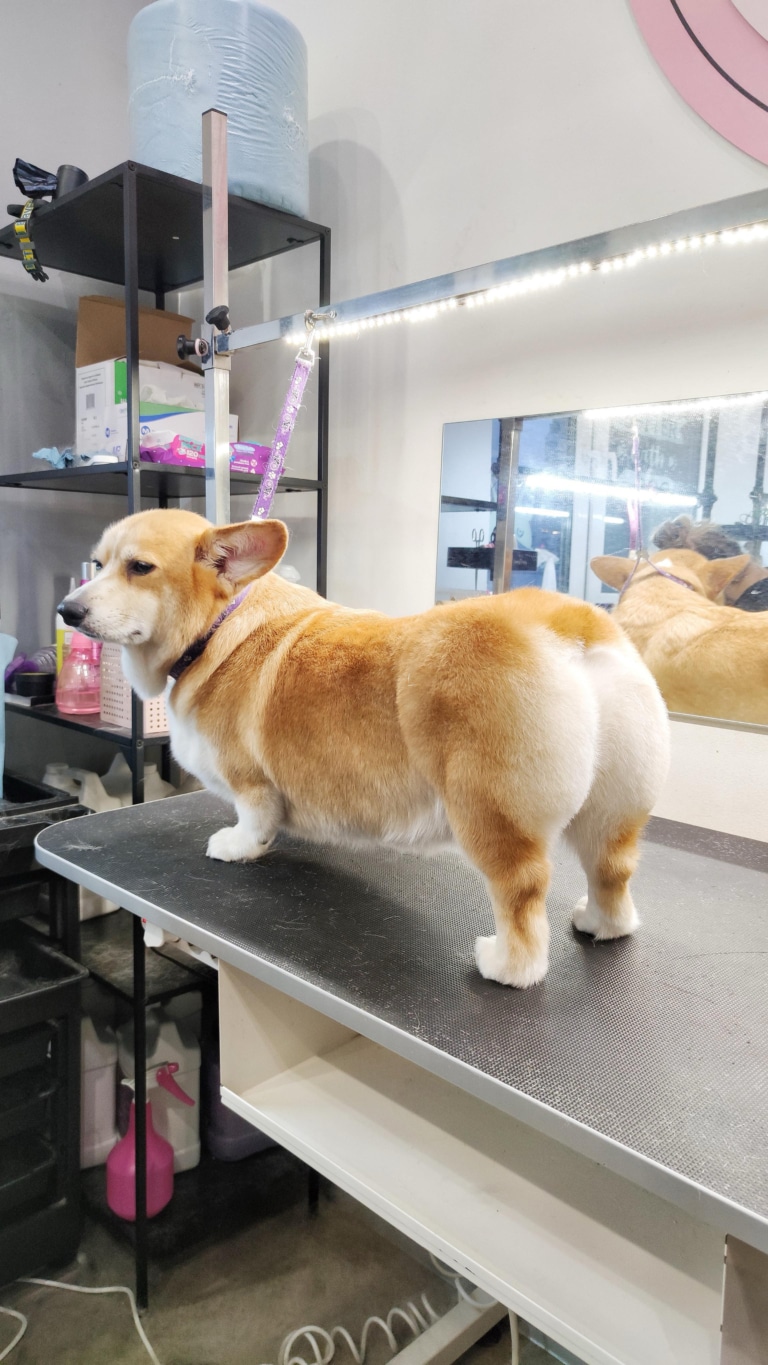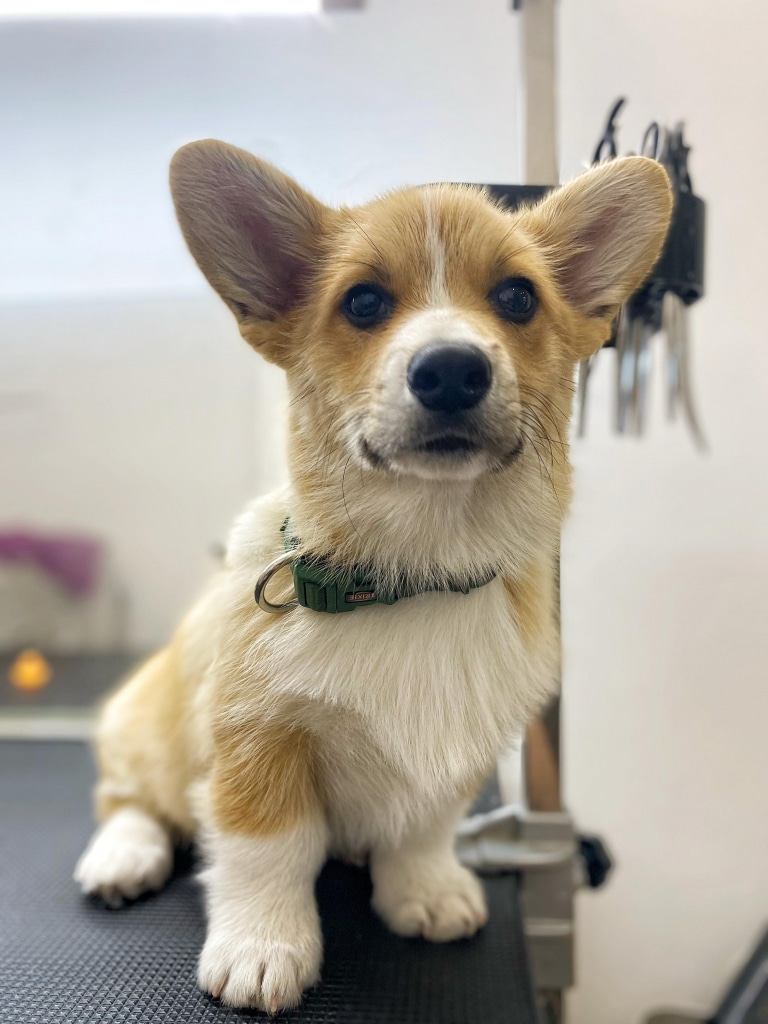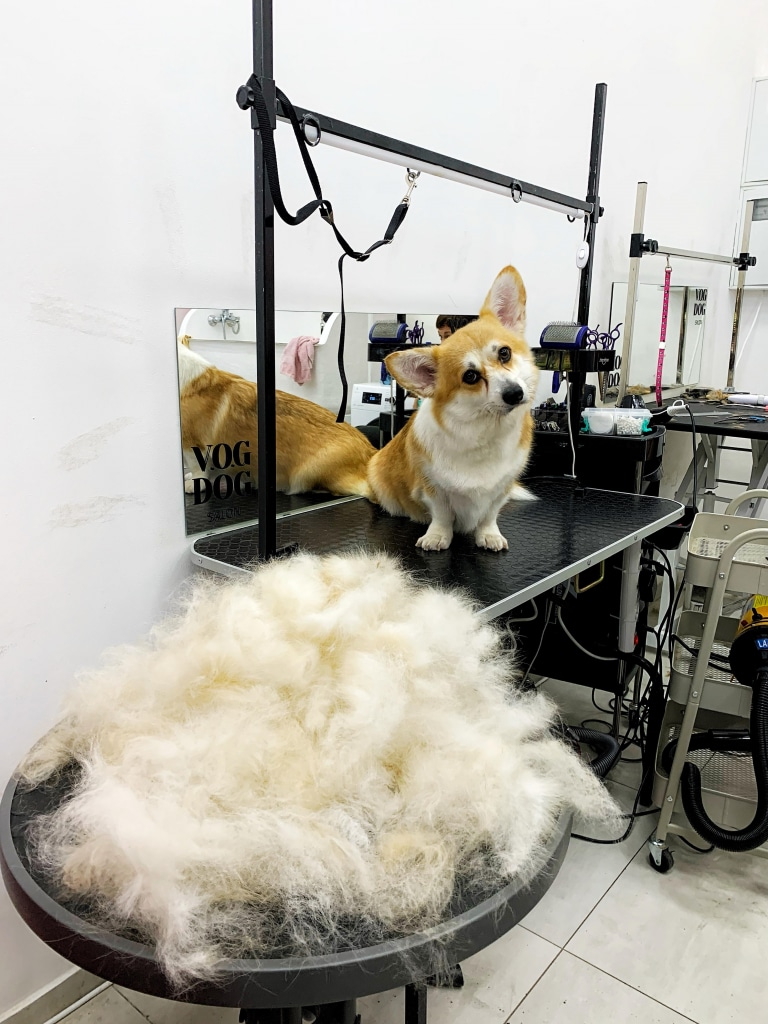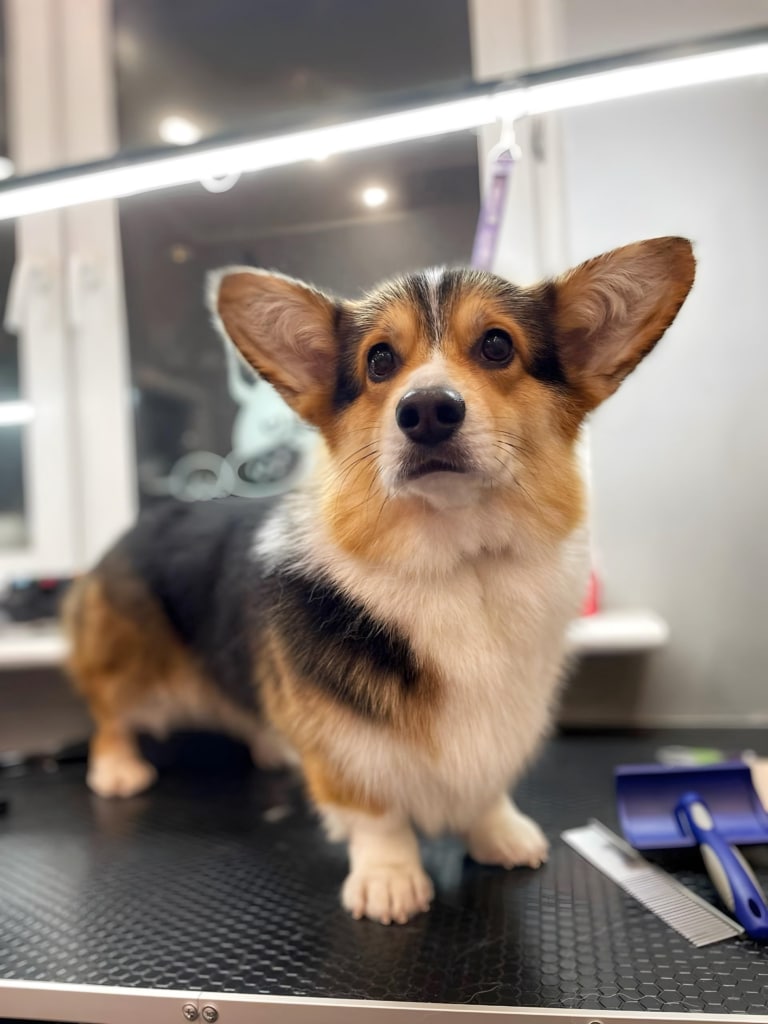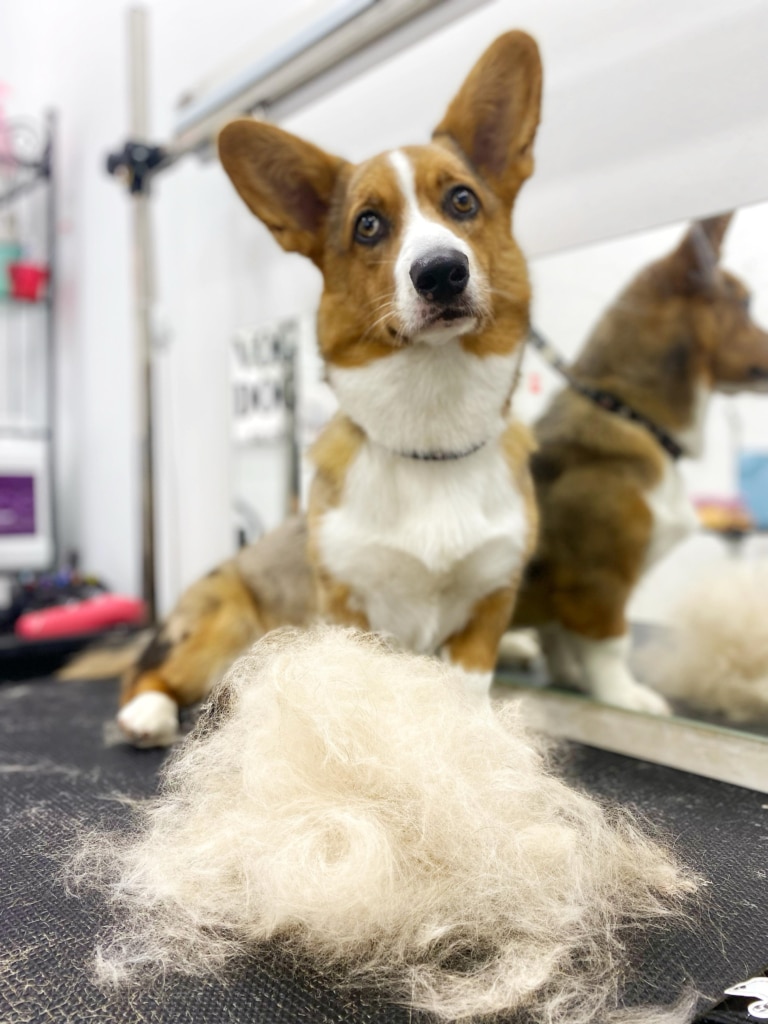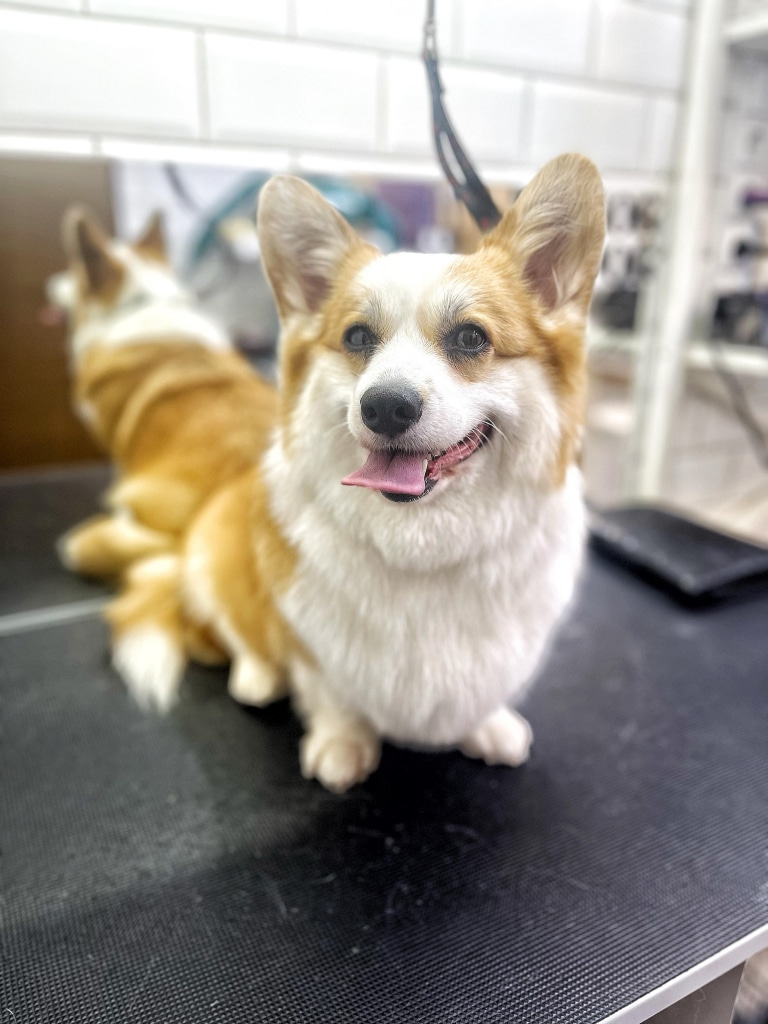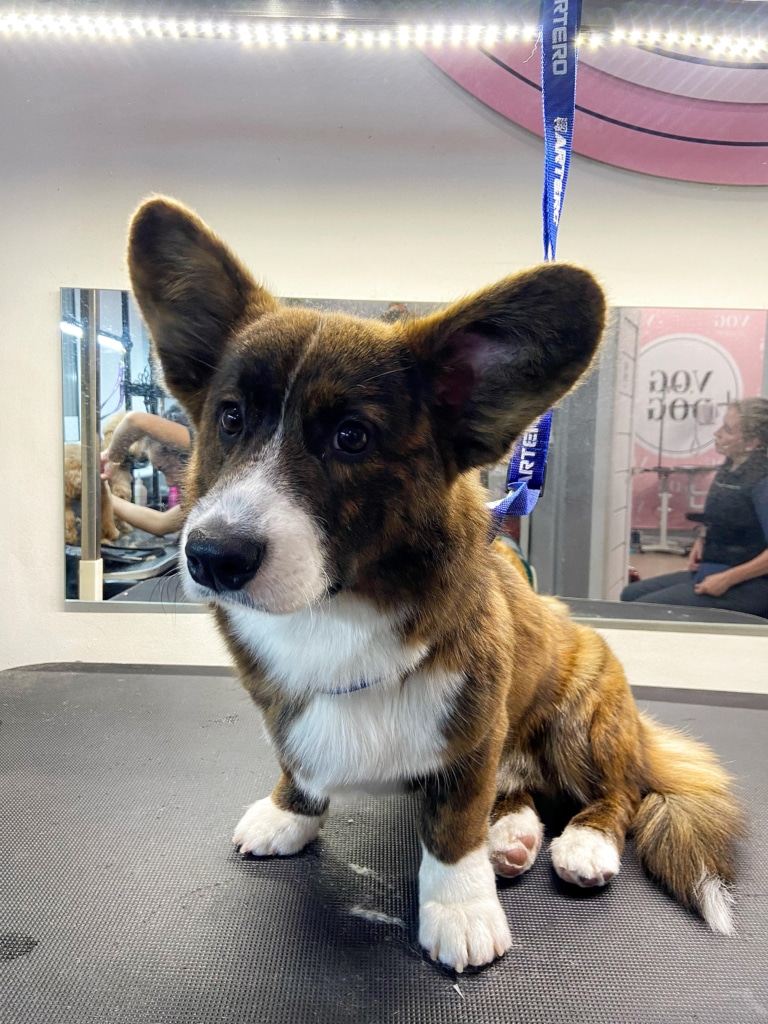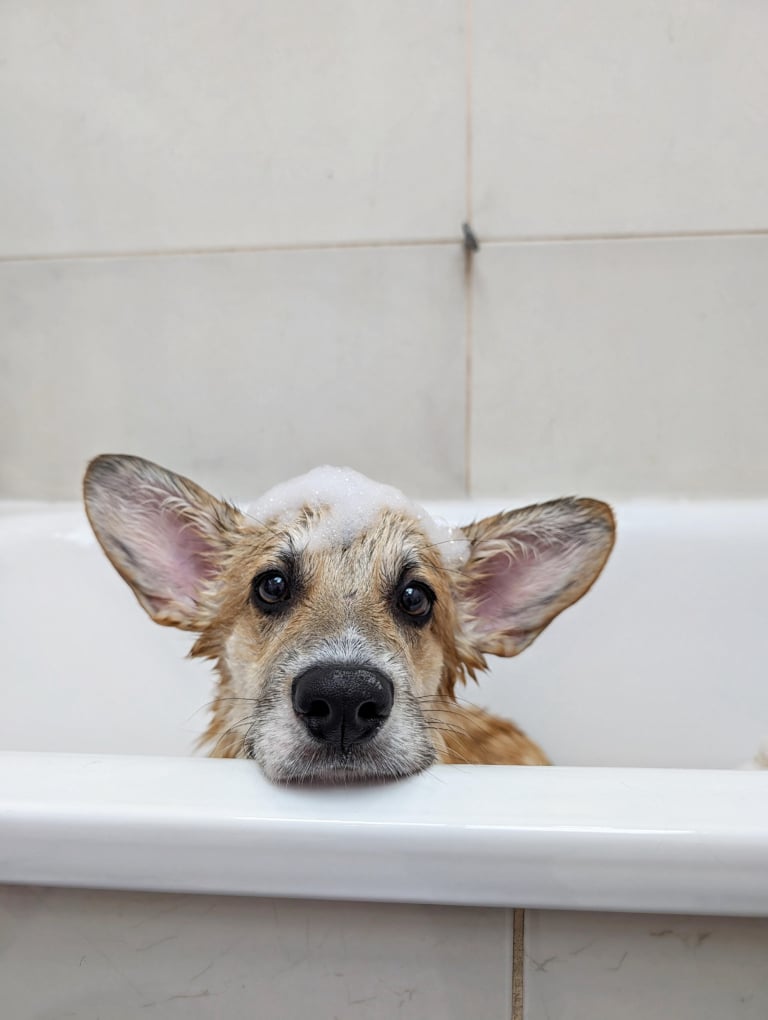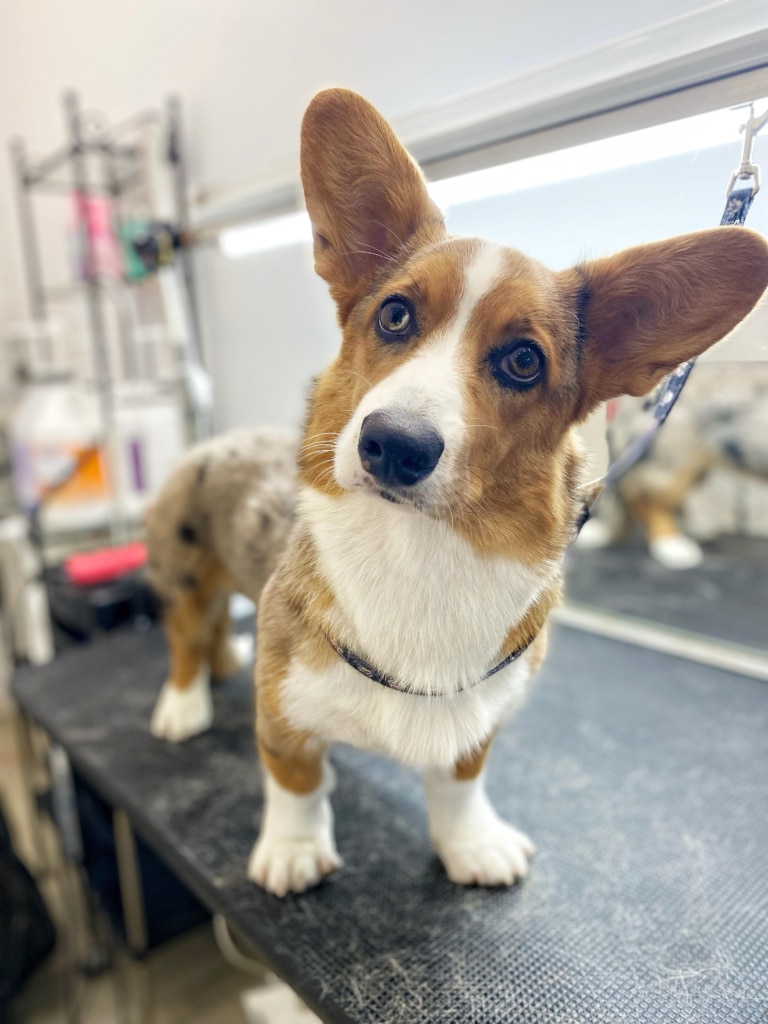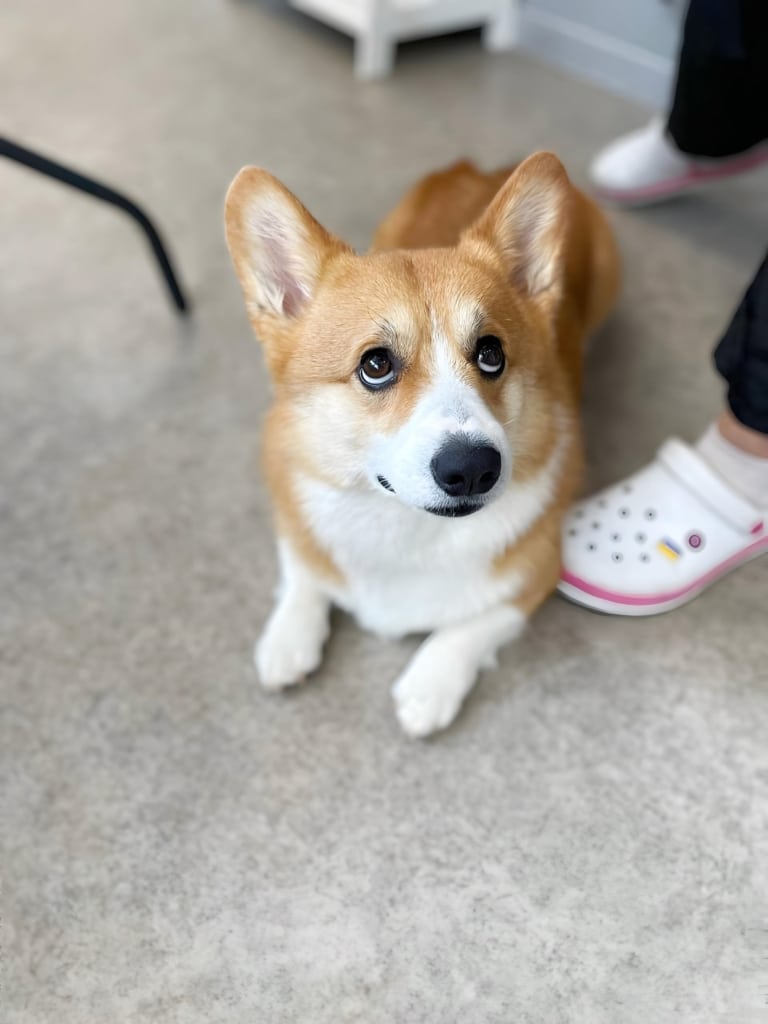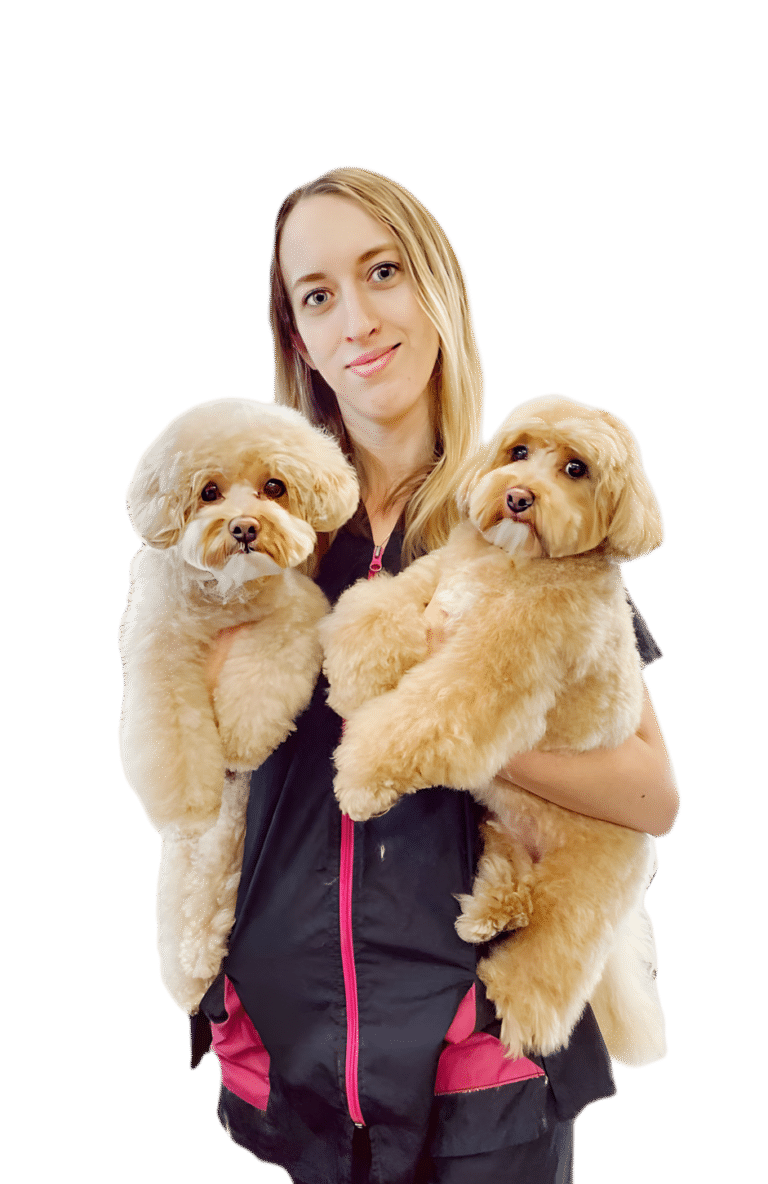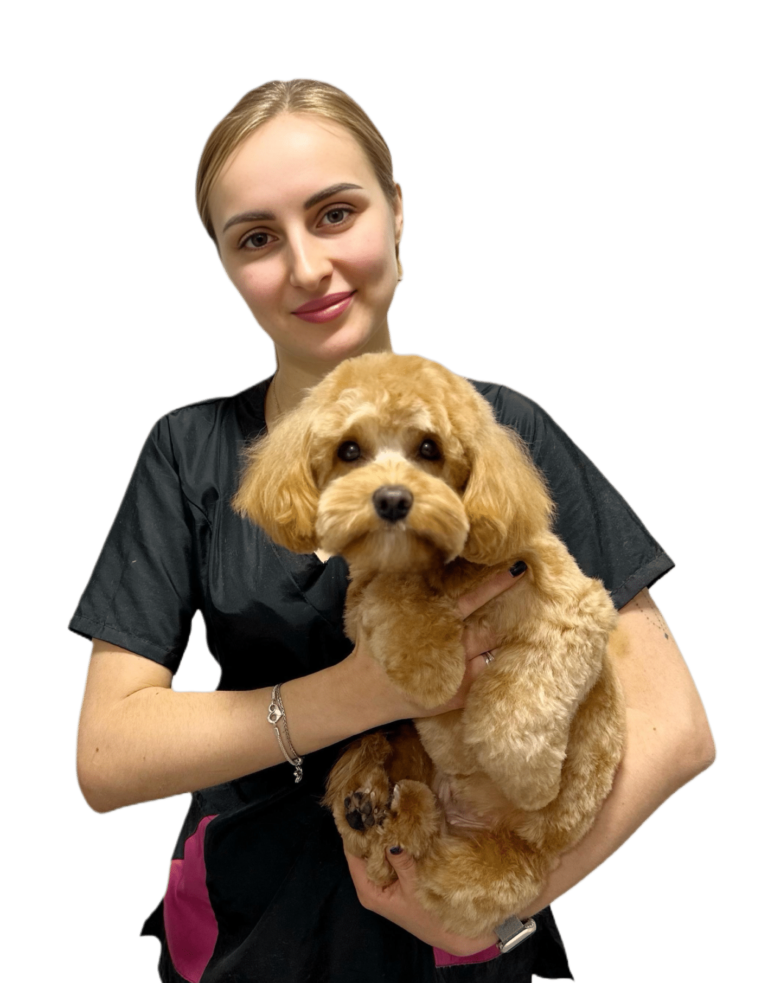
Description:
The Welsh Corgi is a compact but highly energetic dog breed known for its intelligence, its loyalty and its magical appearance. Corgis have a strong build, short legs and a thick double coat that protects them from bad weather at any time of the year. These dogs are often associated with the British royal family, which only increases their popularity. Thanks to their sociability, corgis get along well with children and adults and easily adapt to life both in apartments and in private homes. At the same time, they are wonderful companions who quickly become family favorites. Welsh Corgis are divided into two main varieties: the Pembroke Welsh Corgi, known for its short tail and softer coat, and the Cardigan Welsh Corgi, which has a longer tail and a coarser coat.
Needs:
Corgis require regular grooming for their thick coat, especially during the shedding season when it needs to be brushed daily to prevent tangles and keep the coat looking healthy. Nail trimming, regular ear and eye cleaning, and hygienic grooming for the Corgi are important aspects of grooming this breed. Because Corgis are active dogs with strong herding instincts, they need daily walks and play to maintain their physical and mental health. Without proper exercise, Corgis can exhibit restless or even destructive behavior. Regular bathing with special shampoos and conditioners helps keep their coat in the best condition, and proper care contributes to a long and healthy life for your pet.
Prices for sets of procedures from V.O.G DOG SALON for Welsh Corgis.
6 reasons why you should bring your Welsh Corgi to V.O.G DOG salons:
At V.O.G DOG, each corgi receives personalized care through a detailed database. This allows groomers to take into account all of your pet's health, coat type and allergies to ensure maximum comfort and effectiveness.
An important advantage is that V.O.G DOG does not use anesthesia or sedatives. All treatments are carried out with the utmost care, without stressing your dog, ensuring a safe and enjoyable grooming session.
V.O.G DOG uses only premium cosmetics from the world's leading brands, such as BURBUR PRO™, DAVIS™, ISLE OF DOGS™ and other top representatives in the animal cosmetics market. These products are specially formulated for Corgis based on their thick coats, providing deep cleansing, nutrition and protection.
After the procedures, groomers provide detailed recommendations for the further care of the corgi, including advice on nutrition, coat care and health maintenance. This helps owners keep their pets in excellent condition between visits.
At V.O.G DOG, special attention is paid to hygiene: instruments and areas are sterilized after each client, which reduces the risk of transmission of infections and ensures safety for your Welsh Corgi.
V.O.G DOG offers loyalty programs that include discounts on popular services, regular promotions and special grooming passes. This makes regular grooming for your Corgi not only more affordable, but also more enjoyable, with added bonuses and perks.
Procedures necessary for health and beauty.
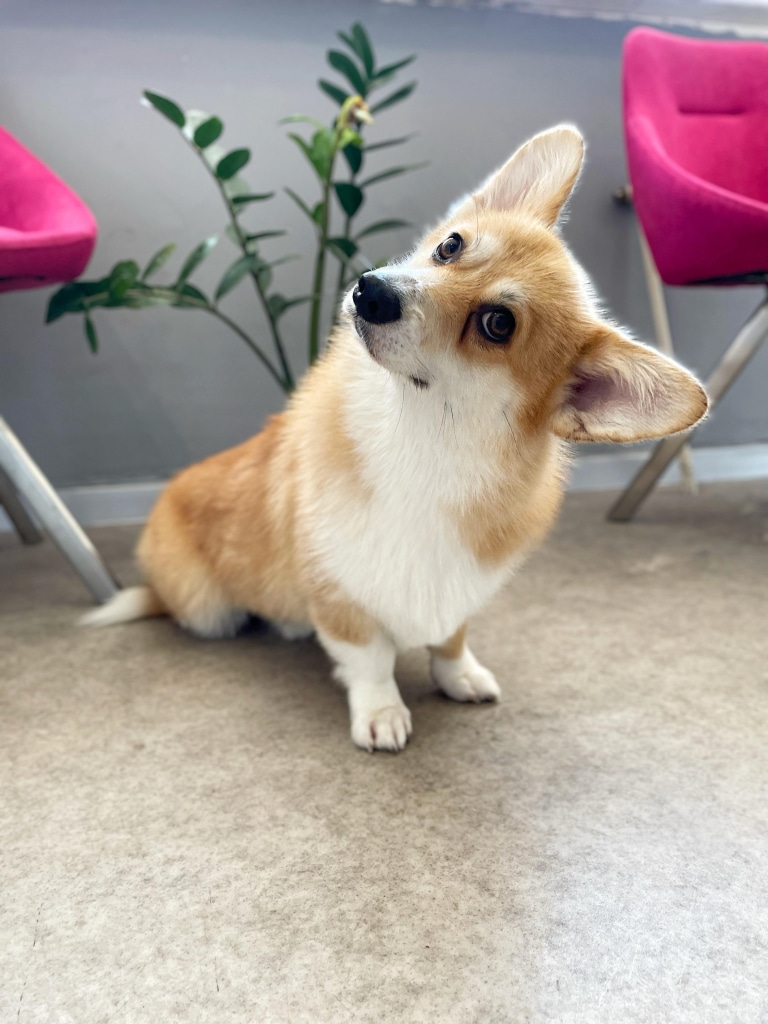
— Trimming and polishing Corgi nails:
Due to the corgi's active lifestyle, their claws can grow quickly, which can lead to discomfort when walking, especially given their short legs. Regular trimming and polishing of nails helps avoid such problems and also prevents scratching.
— Removing fur from a Corgi's ear canal:
Corgis have thick hair that can accumulate in the ears, increasing the risk of infections. Removing excess hair allows for better ventilation of the ear canal, which is especially important for this breed, which is often prone to ear infections.
— Cleaning the eyes with special products for corgis:
Corgis' eyes can become watery from dust or allergens, so regular cleaning with special products will help prevent irritation and tear stains, especially given the Corgi's active lifestyle.
— Brushing your Corgi's matted fur:
The Corgi's double coat often becomes matted, especially during shedding. Regular brushing helps prevent the formation of tangles and reduce shedding, which is important for maintaining a neat appearance and comfort for the animal.
— Bathing your corgi with professional premium shampoo, conditioner and conditioner:
It is important to use high quality products that deeply clean and nourish the coat while maintaining its softness and healthy shine.
— Wiping and cleaning corgi ears:
Due to their activity, Corgis can accumulate dirt in their ears, which increases the risk of infections. Cleaning your ears regularly helps keep them healthy and prevents discomfort.
— Drying and styling wool:
After bathing, it is important to dry the coat thoroughly to avoid irritation and tangling. Styling helps highlight the natural beauty and volume of the coat.
— Hygienic haircut for Welsh Corgi:
A hygienic grooming includes trimming the hair on the belly, ears, genital area, butt and paws, which is important to maintain cleanliness, especially due to short legs, which often get dirty during walks.
— Final polishing of wool:
The final stage of grooming helps to add extra shine and smoothness to the coat, highlighting its natural beauty and providing a neat appearance.
Frequently asked questions about caring for your Welsh Corgi
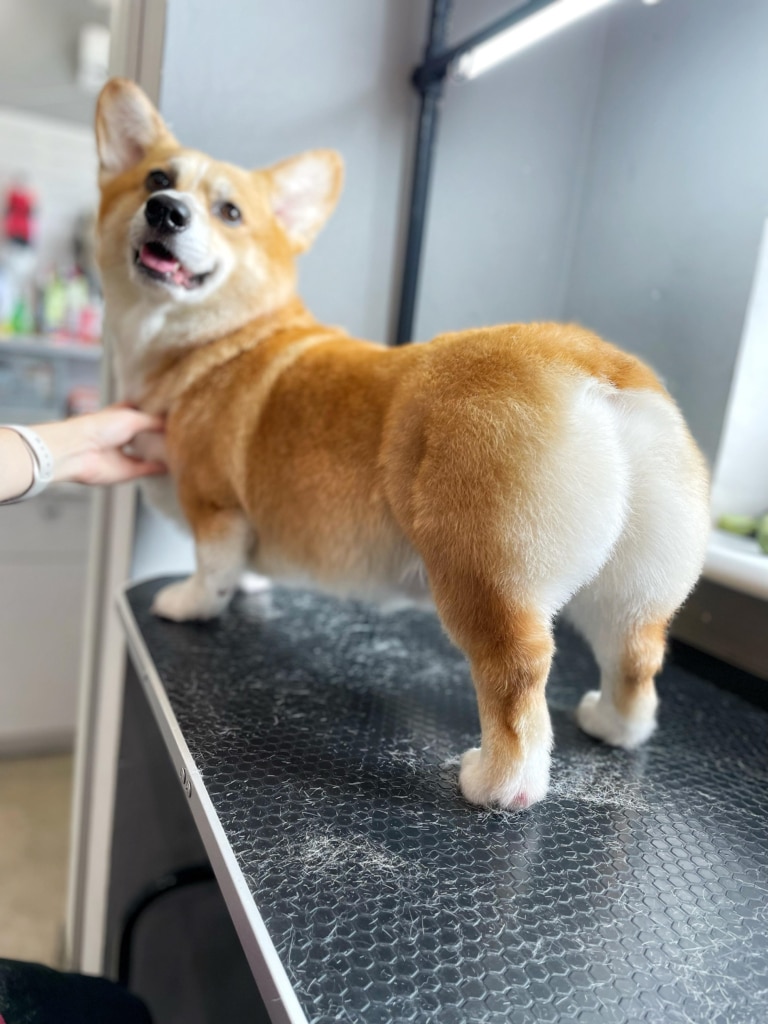
How to care for a corgi's coat during shedding?
Corgis shed twice a year - in spring and autumn. During this period, the dog's coat should be brushed daily to remove dead hairs and prevent the formation of tangles. To do this, use a special comb or brush for the undercoat. Bathing during shedding can also be beneficial to help remove any remaining dead fur. After bathing, it is important to dry the coat thoroughly to avoid skin irritation.
How to prepare a corgi for a show?
To prepare your Welsh Corgi for a show, you need to thoroughly wash the dog using shampoo and conditioner, which will add shine and volume to the coat. After washing, use special styling products to ensure maximum volume of hair, especially on the hind legs and tail. Light trimming of the panties and tail will also help give the dog a neat appearance without violating breed standards.
How often should a corgi be bathed?
It is recommended to bathe your corgi once a month or more often if the dog gets dirty or starts to smell bad. It is important to use a special dog shampoo suitable for their double coat. After bathing, you need to dry the coat thoroughly to avoid irritation and tangles.
How to care for your Corgi's teeth?
Caring for your Corgi's teeth includes regular brushing with a special dog toothpaste. It is recommended to brush your Corgi's teeth several times a week to prevent plaque and tooth decay. You should also regularly provide your dog with chew toys or special treats to maintain dental health.
Do Corgis need to be cut?
Grooming your Corgi is generally not recommended because the double coat of coat helps regulate body temperature. Haircuts can compromise this protection and lead to overheating or hypothermia. The exception is hygienic grooming, which includes trimming the hair around the paws, under the tail and on the belly.
Is the Corgi suitable for families with children?
Corgis are friendly and active dogs that can get along well with children. However, due to their herding instincts, they can bite at the heels, trying to lead children like cattle. It is important to provide proper training and socialization to avoid such problems.
Is the Welsh Corgi breed suitable for apartment living?
Corgis can adapt well to apartment life as long as they get enough physical activity and mental stimulation. It is important to provide them with regular walks and playtime to keep them healthy and happy. Also, the pet must have its own place, which no one will encroach on.
Gallery of works: photographs of Welsh Corgis in our dog beauty salons
Our Masters
Reviews
Follow us on Instagram!
Breed overview
The Welsh Corgi is a dog breed that has won the hearts of many thanks to its magical appearance, active character and intelligence. The most famous representatives of this breed are two varieties: the Pembroke Corgi and the Cardigan Corgi. They are known to be a favorite of royalty, particularly Queen Elizabeth II of England, who kept a large number of corgis during her lifetime. The popularity of these dogs is not limited to just their appearance – Welsh Corgis also make wonderful companions, especially for active families.
Proper grooming, regular brushing, bathing and nail trimming will help keep your dog healthy and looking good. Inappropriate care can lead to skin problems, tangles and even diseases. Therefore, Corgi owners should be especially careful when grooming their pets.
Welsh Corgi: Cardigan and Pembroke
Welsh Corgis come in two varieties: the Pembroke Welsh Corgi and the Cardigan Welsh Corgi. Both types have their own unique characteristics that affect both their appearance and grooming needs.
Pembroke Corgis are known for their short, usually docked tail, although recently more Pembrokes have been left with a natural tail. Their guard hairs are straight and long, giving them an elegant appearance. Pembrokes usually have a softer undercoat, which makes their coat very pleasant to the touch.
Cardigan Corgis, on the other hand, have a longer tail that is often very bushy. Their guard hair is coarser and the undercoat is very dense. This gives cardigans a more rugged appearance and also requires more care, especially during shedding periods.
Features of caring for corgi hair
Caring for your Corgi’s coat is an important part of their health and appearance. They have a double coat of coat consisting of coarse guard hairs and soft undercoat. This double layer helps protect them from cold and heat, but also makes them vulnerable to matting if not regularly cared for.
How to properly comb your Corgi to prevent mats from forming
Grooming your Corgi is a mandatory procedure that should be done at least once a week, and daily during shedding. Use a bristle brush or fine-tooth comb to get into the undercoat and remove dead hairs. Pay special attention to the areas around the ears, under the tail and on the belly, where the coat is most prone to matting.
Brushing also helps distribute natural oils evenly throughout the coat, making it shiny and healthy. Remember that regular grooming of your Corgi’s coat will help prevent many skin problems and keep your pet comfortable and looking beautiful.
Corgi Grooming: What You Need to Know
Is it possible to cut a Welsh Corgi’s hair?
Welsh Corgis have a thick double coat that serves important functions: it protects the dog from adverse weather conditions and helps regulate body temperature. This is why complete trimming of a Corgi’s coat is not recommended as it can damage the Corgi’s protective natural barrier and lead to serious health problems.
However, there are some acceptable haircuts that can be done to keep your Welsh Corgi looking neat and hygienic.
Grooming a Welsh Corgi: This is a basic type of grooming that involves trimming the hair around the ears, paws, under the tail and on the belly. These areas can easily become dirty or tangled, so regular trimming helps keep your dog clean and comfortable.
Pants and Tail Trimming: On show dogs, the Corgi’s panties and tail can be trimmed slightly to give them a neat and attractive appearance. This will highlight the Corgi’s natural beauty without harming their undercoat.
Trimming the fur on their paws: Corgis’ short paws can pick up a lot of dirt on their fur during walks. Trimming this area will help prevent the coat from matting and make it easier to keep clean.
Trimming and Trimming the Corgi’s Butt: One of the most popular elements of Corgi grooming among owners is trimming and trimming the fur on the dog’s hindquarters. This creates a neat appearance of “buns” or “peaches”, as owners often like to call them. Trimming the hair on the butt helps maintain hygiene, especially for dogs with longer guard hairs, and adds aesthetic appeal.
Frequency of haircuts and their effect on the dog’s health
The frequency of haircuts depends on the individual dog’s needs and lifestyle, but in general it is recommended to have hygienic haircuts every 2-3 months. If your dog often walks outside, especially in urban areas, grooming can be done more often to avoid dirt accumulation and tangling of the fur.
Regular hygienic haircuts help reduce the risk of infections, irritations and tangled hair. However, it is important not to over-groom and not to cut the coat too short in order to preserve its natural protective properties.
Grooming a corgi at home and at the groomer
Caring for your Corgi at home is an integral part of keeping them healthy and looking good. Here are the basic procedures that should be performed regularly:
Brushing: Corgis should be brushed at least once a week, and daily during shedding. To do this, use a bristle brush or a fine-tooth comb to get into the undercoat and remove dead hairs. This will help prevent mats from forming and distribute the natural oils evenly throughout the coat, making it shiny and healthy.
Ear Cleaning: Your Corgi’s ears should be checked weekly for dirt, waxy deposits, and possible signs of infection. To clean, use a special dog ear cleaner and soft cotton wool or a swab. It is important not to insert anything deep into the ear canal to avoid damage.
Nail Trimming: Corgis’ nails need to be trimmed about once a month to prevent them from becoming overgrown and curled. If the nails become too long, it can cause discomfort or even pain when walking. The result is curvature of the spine and joint diseases.
Bathing your Corgi should be done once a month, or more often if the dog is very dirty. When bathing, use warm water and a special shampoo for dogs. After bathing, dry your dog’s coat thoroughly to avoid tangles and skin irritation.
When and why should you contact professional salons?
Although most grooming procedures can be done at home, there are situations when you should call a professional groomer:
Show Grooming: If your dog is competing in shows, a professional groomer will help prepare him for the event by ensuring proper coat placement and care for details that may be important to the judges.
Special procedures: Some procedures, such as deep cleaning of the undercoat during shedding, express shedding, cleaning of the paraanal glands, ultrasonic teeth cleaning, complex haircuts or many other procedures may require a professional approach.
If your dog is nervous or challenging during grooming, an experienced groomer can provide safe, less stressful care.
Bathing a Corgi: Tips and Tricks
How to properly bathe a Corgi to keep its coat and skin clean
Bathing is an important part of caring for your Corgi. Due to their thick double coat, Corgis can easily pick up dirt and dust during walks, especially in urban environments.
Here are some tips for proper bathing:
Use Warm Water: When bathing, it is important to use warm water to prevent your dog from going into shock and to ensure a comfortable environment. The water should be warm enough to thoroughly wet the thick undercoat.
Shampoo and conditioner: Use a dog-specific shampoo suitable for their coat type. The shampoo should be diluted with water and rubbed thoroughly into the coat, especially in areas where dirt can accumulate, such as the paws, belly and under the tail. After this, you can use a conditioner to help keep the coat soft and easy to comb.
Rinse thoroughly: It is important to thoroughly rinse the shampoo and conditioner from the wool to avoid skin irritation. Make sure the water is clean and free of detergent residue.
Drying: After bathing, thoroughly dry your dog’s coat with a towel and hair dryer. Avoid overheating your hair with the hair dryer by maintaining a medium temperature and constantly moving the hair dryer to avoid overheating.
Grooming a corgi during shedding
Corgis have a thick double coat of coat that changes with the seasons. Corgis shed twice a year – in spring and autumn. This is a natural process during which a dog sheds its undercoat in preparation for the change of season.
During shedding, it is important to brush your Corgi regularly to remove dead hair and prevent mats from forming. To do this, it is best to use special tools such as an undercoat comb or a fine-toothed brush. It is recommended to brush your Corgi daily, especially during active shedding periods, to prevent hair from accumulating in the house and causing discomfort to the dog. Bathing while shedding can also be helpful in removing any remaining dead hair.
Grooming cost and groomer visit
The price of corgi grooming can vary depending on several factors:
Type of service: Hygienic haircut, full bath with hair styling, paw trimming or nail trimming – each of these services has its own cost.
Coat Condition: If the Corgi’s coat is very matted, it may require more time and effort on the groomer’s part, increasing the cost of the service.
Additional services: Some salons offer additional services, such as massage, applying protective wax to paws or using special products to add extra shine to the coat.
In V.O.G DOG grooming salons, prices may vary depending on the scope of work and additional services. The main type of care is an integrated approach. You can see how much it costs to cut a Welsh Corgi on the page “prices for dog grooming in Kyiv”
Contacts
Kiev, Pechersk district, M. Mikhnovsky Boulevard (Friendship of Nations), 27
Kiev, Pechersk district, Lesya Ukrainka Boulevard, 14
Kiev, Solomyanka district, V. Lobanovsky Avenue, 6a
Kiev, Desniansky district, Red Kalina (Mayakovsky) Avenue, 68a
Kiev, Shevchenko district, Sholudenka Street, 14
Kiev, Darnytsky district, Knyazhy Zaton Street, 2/30
Kiev, Dnipro district, I. Kotlyarevsky (Work) Boulevard, 7
Kiev, Holosiivskyi district, 4 Seasons Residential Complex, Maksymovycha Street, 3d
Kyiv, Obolonskyi District, V. Ivasiuka Avenue, 6B (building 2)
Kiev, Shevchenkivskyi district, Shchusev Street, 4
Shop 10:00-21:00
Hotel 24/7
European Street, 2a (Eurocity Residential Complex, near Vyshneve town)
Kiev, Darnytskyi district, st. Knyazhiy Zaton, 11
